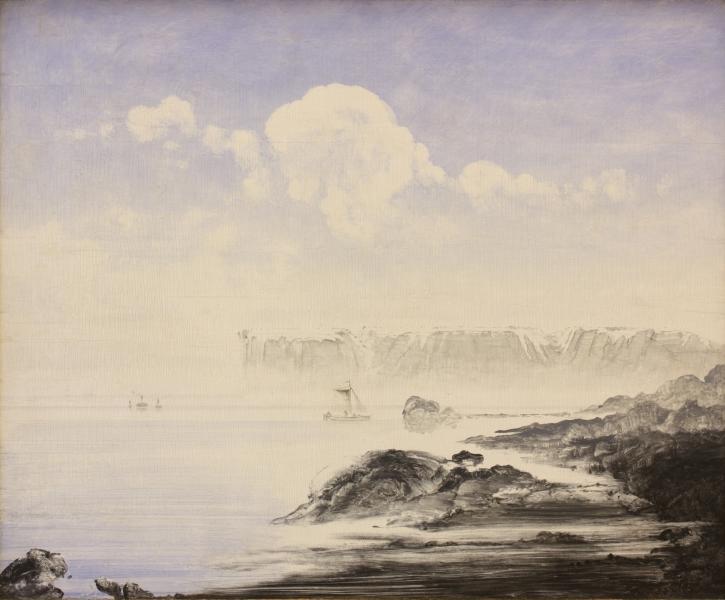Within academic painting, landscape motifs were often heavily idealised. A successful composition was more important than topographic correctness, and cattle, fields and flowing water gave an impression of harmony and wealth. In 19th century Romanticism, new types of landscapes appeared in painting. Nature was meant to stir powerful emotions in the viewer. Calm and harmony were exchanged for dramatic panoramas of cliffs and stormy seas and seductive views of moonlight.
Norwegian National Romantic vistas of impressive landscapes and man interacting with nature also had another agenda. Paintings such as Johan Fredrik Eckerberg’s Fra Romsdalen were not just grand paintings, they were also a part of the nation building process after the secession from Denmark culminating in the dissolution of the union with Sweden in 1905.
